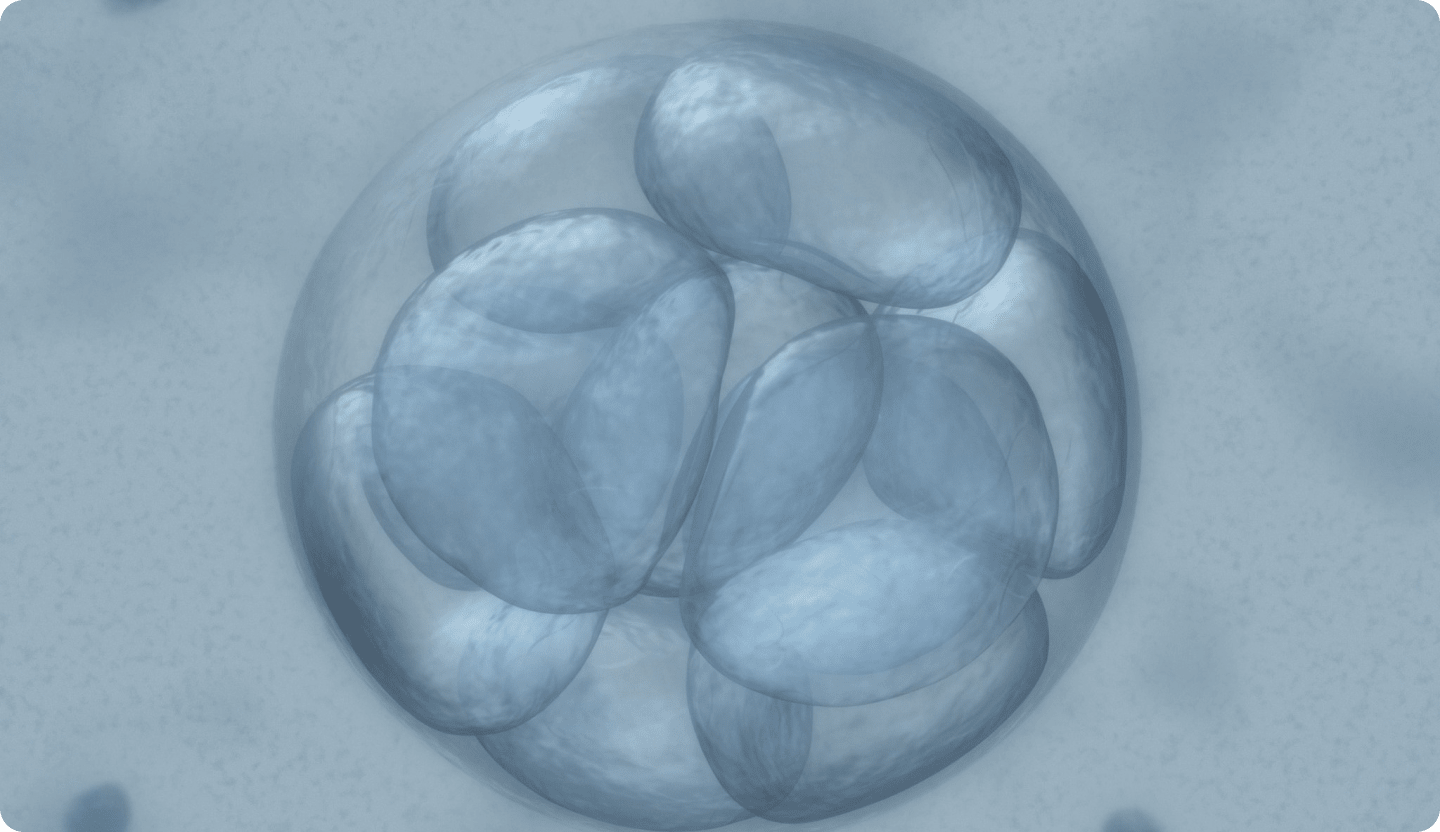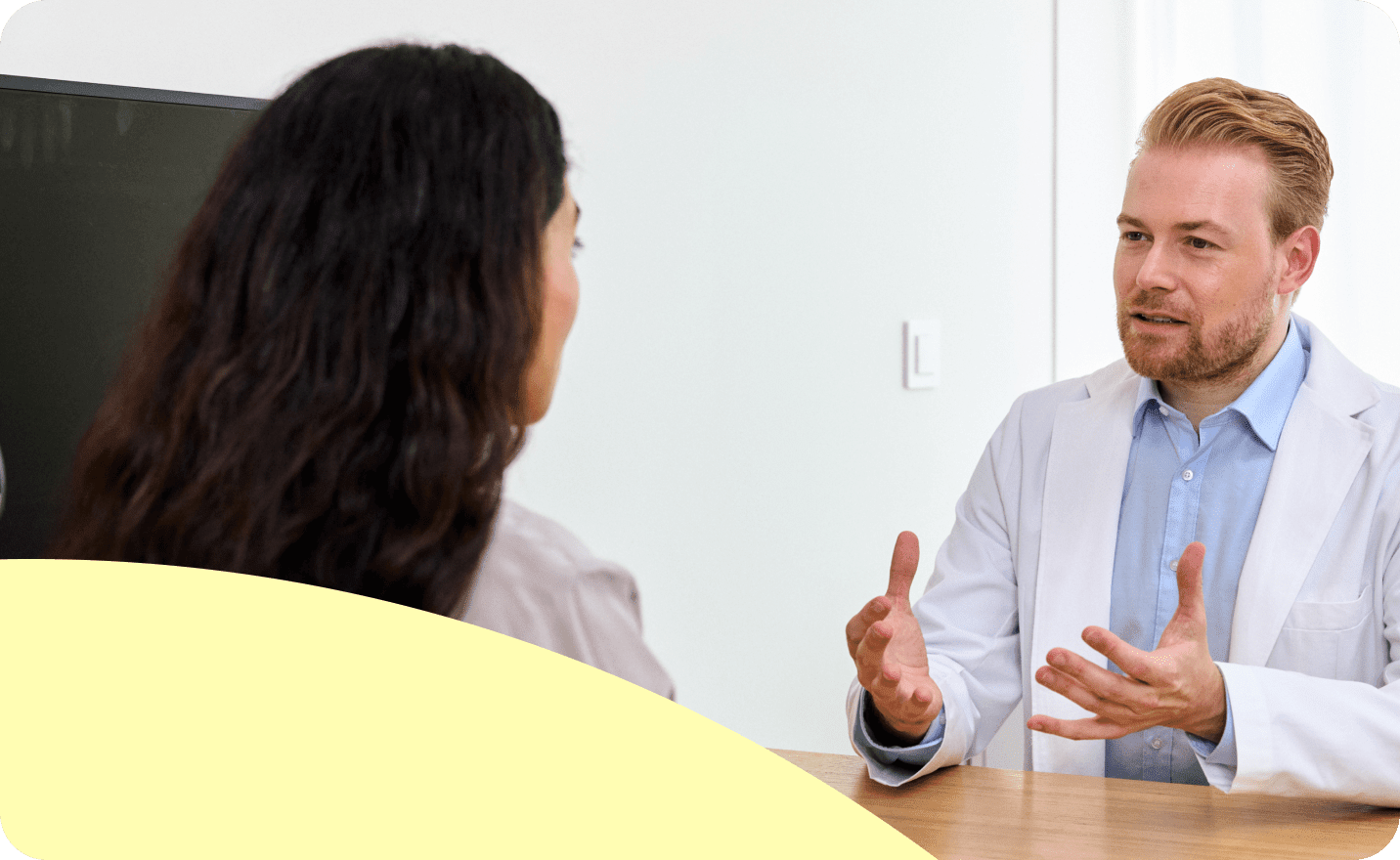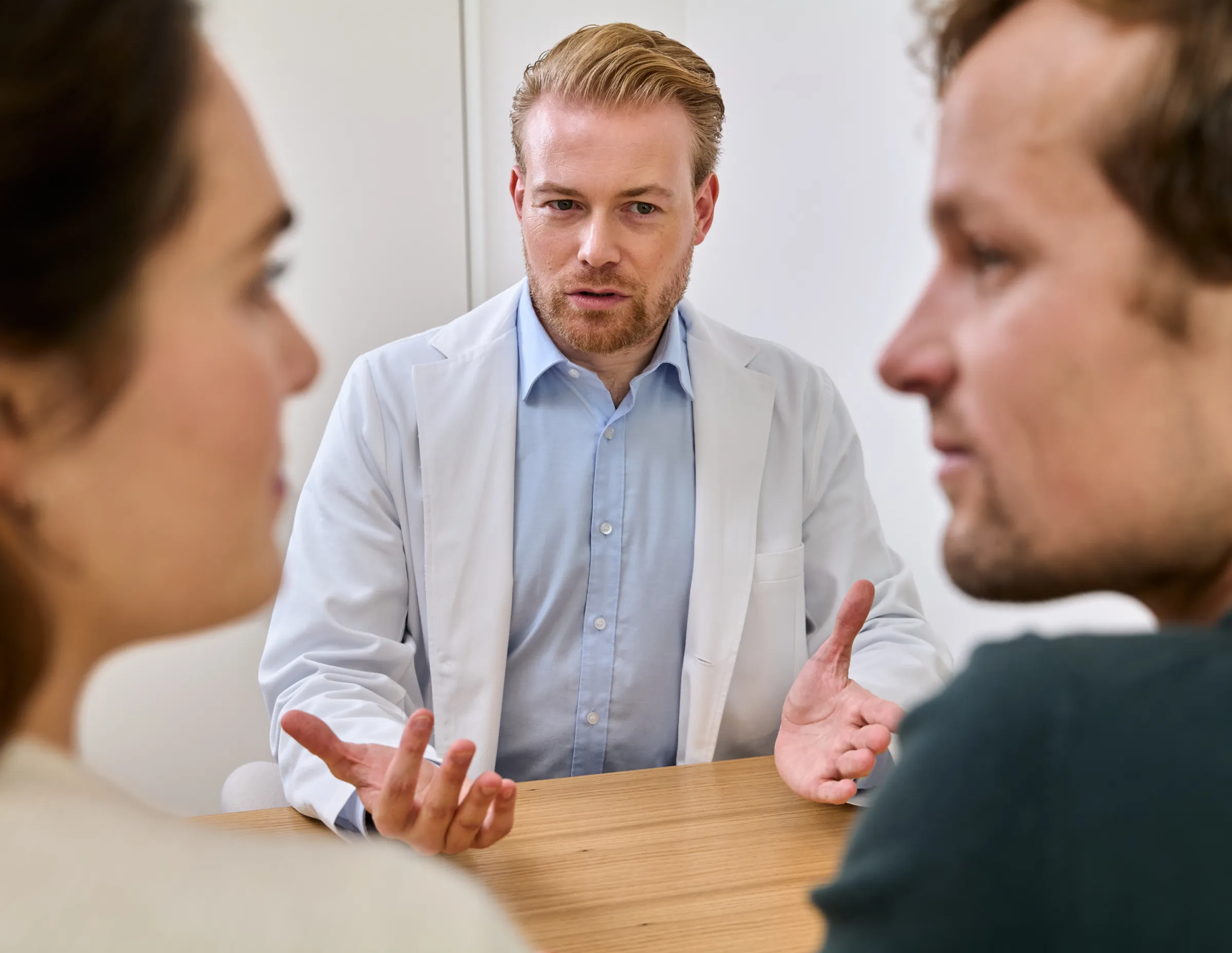Learn everything about the timelines of the different assisted reproduction methods including IUI, IVF and ICSI.
Key Facts about Assisted Reproduction
- The duration of a fertility treatment is typically 4-6 weeks.
- The success rates for IVF are about 32%, and for IUI, they range between 10-20%.
- Surplus embryos can be frozen for later use.
- After 14 days, enough hCG is present in the blood to detect a pregnancy.
- While IUI causes minimal pain, the pain can be more severe with IVF or ICSI.
Introduction
Fertility treatments can help couples who are unable to conceive naturally. The term "assisted reproduction" is often associated with in vitro fertilisation (IVF). However, there are different methods of assisted reproduction, each with its own procedures.
In this article, you will get a detailed overview of the timelines of IUI, IVF, ICSI, and possible reasons for using them.
What is the process of IUI, IVF, and ICSI?
1) Fertility Analysis: Before any treatment, a comprehensive fertility analysis should be done to determine the suitable method and precise hormone dosage. Understanding the exact causes of infertility allows for tailored treatment. This analysis is standard before all treatments and is usually reimbursed by health insurance.

2) Stimulation of the Ovaries: For procedures like insemination or Natural IVF, hormonal stimulation may not be necessary. However, in regular IVF and intracytoplasmic sperm injection (ICSI), certain hormones are used to stimulate the ovaries. Hormone treatment helps more eggs mature, increasing the chances of obtaining a well-developed embryo. During this phase, regular ultrasound exams and blood tests monitor follicle growth and uterine lining development.

3) Triggering Ovulation: Ovulation can occur naturally or be hormone-induced. When follicles reach about 20 mm, human chorionic gonadotropin (hCG) is usually injected to trigger ovulation, which occurs about 36 hours later.
4) Follicle Puncture (Egg Retrieval)–only for ICSI and IVF: Once the eggs (oocytes) are mature, they are retrieved from the follicles using a fine needle in a short procedure under general anesthesia. On the day of egg retrieval, rest, drink plenty of fluids, and eat a protein-rich diet to prevent overstimulation. Though rare, ovarian hyperstimulation syndrome (OHSS) can lead to complications, potentially postponing embryo transfer.
5) Sperm Retrieval: The male partner provides a sperm sample, which is prepared in the laboratory to obtain sperm cells. For IUI, at least 5 to 10 million motile sperm per milliliter are required. For IVF, about 50,000 to 100,000 sperm are needed. For ICSI, a single sperm is sufficient.

6) Fertilisation in the Laboratory–only for ICSI and IVF: The retrieved eggs and sperm are combined in the laboratory for fertilisation. In cases of low sperm quality or using cryopreserved eggs, ICSI is performed by injecting a single sperm directly into the egg.

7) Cultivation of the Embryos–only for ICSI and IVF: The fertilised eggs, now embryos, are cultivated and observed in the laboratory. The embryos divide and develop further.
8) Embryo Transfer–only for ICSI and IVF: If the embryo develops properly, it is transferred to the woman's uterus after about 5 days. This procedure is usually done without anesthesia and is similar to a gynecological exam.
9) Pregnancy Test: After the embryo transfer or insemination, there is a waiting period of about two weeks. During this time, the β-hCG level doubles every 2 days if pregnancy occurs. A pregnancy is defined by an hCG value of 20 mIU/mL, usually reached 14 days after ovulation or embryo transfer. Therefore, a test should be conducted after the two-week waiting period to confirm implantation.

How long do fertility treatments take?
The duration of fertility treatments can vary greatly depending on the method and individual cycle. While insemination with a regular cycle takes about 4 weeks, IVF or ICSI treatments can take longer.
Here's a rough overview of the different phases and their duration:
Preparation phase (variable, 1-4 weeks):
- Birth control pill: Sometimes, the pill is recommended before starting treatment to regulate the cycle, taking about 2-3 weeks.
- Down-regulation: In IVF and ICSI, down-regulation is often done to suppress the natural cycle, taking about 2 weeks.
Stimulation phase (approx. 10-14 days):
- Hormone administration: Hormones (FSH and LH) are injected to stimulate the ovaries. This phase usually lasts 10-14 days, with regular ultrasound exams and blood tests.
Triggering ovulation & egg retrieval (1-2 days):
- Triggering ovulation: When the follicles are mature, hCG is injected to trigger ovulation.
- Egg retrieval: Eggs are retrieved shortly before ovulation, about 32 hours after the hCG injection.
Fertilisation & embryo culture (2-5 days):
- Fertilization: Eggs are fertilized in the lab with sperm (IVF) or a single sperm is injected directly (ICSI).
- Embryo culture: Embryos are cultivated and observed in the lab for 2 to 5 days.
Embryo transfer (1 day):
- Transfer: Typically, the embryo is transferred as a blastocyst (5 days after follicle puncture). Sometimes, the embryo can be transferred earlier.
Waiting time (approx. 2 weeks):
- Pregnancy test: A pregnancy test is carried out about 2 weeks later.
Which medications do you have to take during fertility treatment?
Various medications are used in assisted reproduction techniques (ART) to support the process and increase the chances of a successful pregnancy. The exact combination of medications can vary individually, depending on the specific situation and treatment protocol. Here are the most important medications often used in IVF or ICSI:
- Hormones to stimulate the ovaries: Follicle-stimulating hormone (FSH) is administered, often with luteinising hormone (LH). FSH stimulates the growth of follicles in the ovaries, where eggs mature. It is usually given as a subcutaneous injection. LH supports follicle growth and triggers ovulation, releasing the mature egg from the follicle.
- Hormones to trigger ovulation: Human chorionic gonadotropin (hCG) is injected about 36 hours before planned ovulation to trigger the final maturation of the eggs and induce ovulation. The puncture must occur shortly before ovulation.
- Medications to suppress premature ovulation: Gonadotropin-releasing hormone (GnRH) analogues or antagonists are used to suppress the woman's natural cycle and prevent premature ovulation. GnRH analogues are usually administered as a nasal spray or injection, while GnRH antagonists are given as an injection.
- Medications to support implantation: Progesterone prepares the uterine lining for embryo implantation and supports the pregnancy in the early weeks. It can be taken as a vaginal suppository, gel, injection or orally.
What are the chances of success with assisted reproduction?
Success rates for assisted reproduction depend on the method, age, and cause of infertility. With insemination (IUI), the pregnancy rate is 10-20% per cycle. For IVF, it is about 32% for women under 35 years of age.
What methods of assisted reproduction are there?
There are various treatment methods for assisted reproduction, each tailored to different causes of infertility. Insemination, for example, is recommended for slightly impaired fertility, while IVF or ICSI are suitable for more severe fertility disorders.
| Treatment | What is done? | Suitable for |
|---|---|---|
| Intrauterine Insemination (IUI) | In IUI, prepared sperm are placed directly into the woman's uterus. This increases the likelihood that the sperm will reach and fertilize an egg. Couples with mild male infertility, unexplained infertility, or women with ovulation problems | Couples with mild male infertility, unexplained infertility, or women with ovulation problems. |
| In Vitro Fertilization (IVF) | In IVF treatment, eggs are retrieved and fertilized with sperm by biologists or embryologists. The resulting embryos are transferred to the uterus a few days later. | Couples with various fertility problems, such as blocked or damaged fallopian tubes, endometriosis, male infertility, or advanced maternal age. |
| Intracytoplasmic Sperm Injection (ICSI) | An ICSI treatment is similar in process to IVF, but here a single sperm is injected directly into the egg. | Couples in whom sperm quality is severely limited and the sperm cannot penetrate the egg on their own, or when cryopreserved eggs are used. |
If you would like to learn more about the different methods of artificial insemination, you should also read our article "IUI, IVF, and Other Fertility Treatments You Should Know."
How many embryos can I have transferred?
If the embryo transfer takes place on day 2 or 3 after the follicle puncture, one to two embryos are transferred depending on the woman's age. If a transfer takes place on day 5 (blastocyst transfer), only one embryo (blastocyst) is transferred to prevent a multiple pregnancy.
What happens to excess eggs or embryos?
In assisted reproduction, more eggs are often fertilised than are needed. The unused but fertilisable eggs or embryos can be frozen (cryopreserved) and stored for future treatment cycles.
The cryopreservation of eggs or embryos takes place at extremely low temperatures, usually at -196°C. This temperature is achieved by using liquid nitrogen.
At this temperature, all biological processes in the cells are stopped, so that they can be kept in a stable state for a long period of time.
Is assisted reproduction painful?
Whether assisted reproduction is painful depends on the method used. While insemination (IUI) causes little pain, the pain after egg retrieval in IVF or ICSI can be more severe.
Pain during IUI
IUI is usually not painful and is comparable to a gynecological examination. Some women experience mild cramps during or after the procedure, similar to menstrual cramps.
Pain in IVF and ICSI
With IVF or ICSI, mild pain occurs more frequently. The eggs are removed under a short anesthetic, making it painless. After the procedure, mild pain and cramps may occur, which can usually be well controlled with painkillers.
The transfer of embryos into the uterus is usually not painful and is similar to a gynecological examination.
Other side effects
In addition to pain, assisted reproduction can cause other side effects, such as light bleeding, nausea, bloating, or mood swings. In rare cases, more serious complications can occur, such as ovarian hyperstimulation syndrome (OHSS) or infections.
Takeaway
Modern reproductive medicine offers couples various treatments to help fulfill their dream of having a child. Specialised fertility clinics provide methods of assisted reproduction, such as IUI, IVF or ICSI, tailored to individual needs and causes of infertility.
Assisted reproduction is a complex process that can vary significantly. In many cases, especially with IVF or ICSI, medications and hormones are crucial in controlling the cycle and increasing success rates.
The high success rate, especially in younger women, demonstrates that assisted reproduction can be an effective option for many couples. Cryopreservation of surplus embryos also allows for additional attempts without repeating the entire process.







